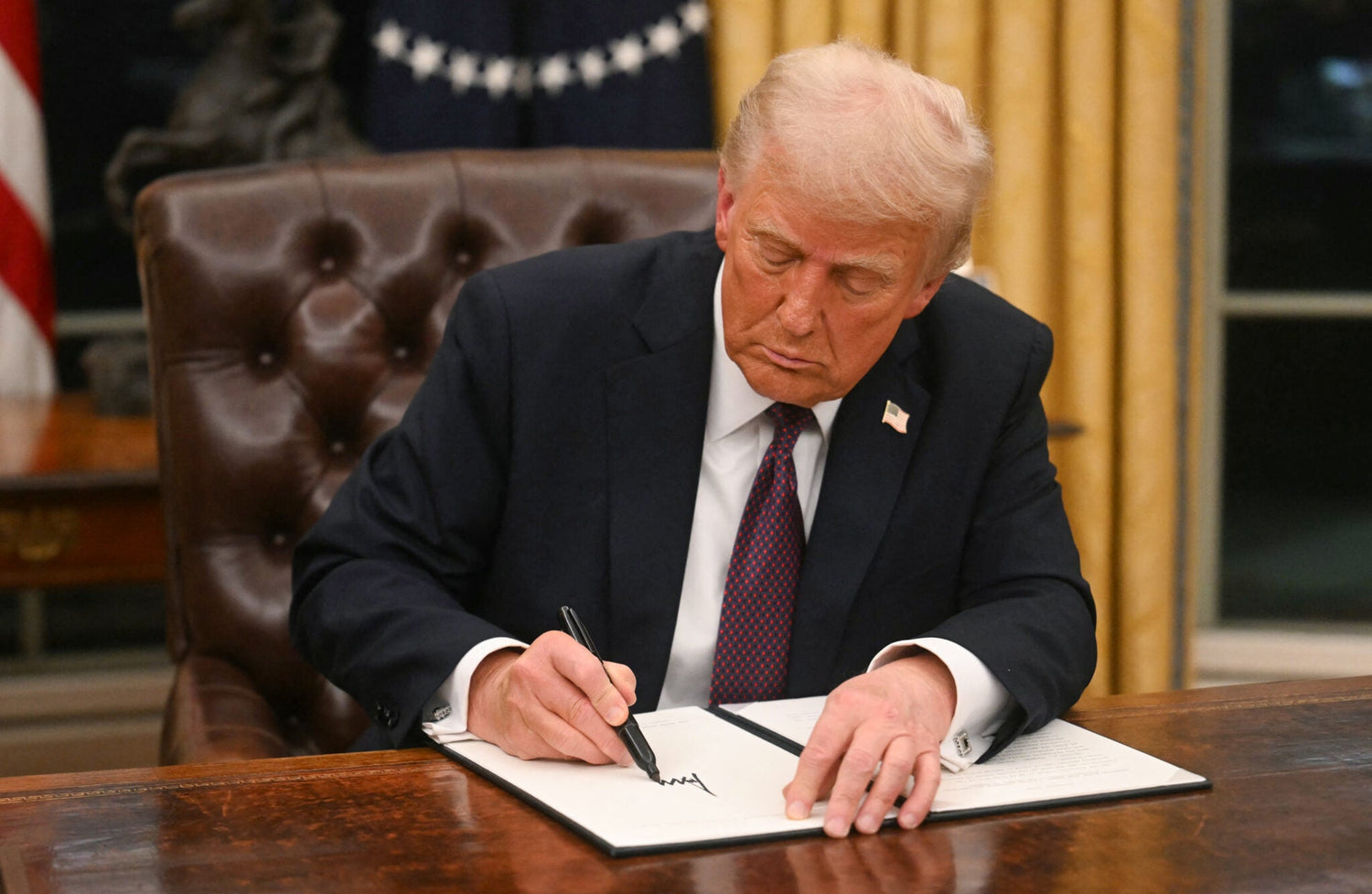Donald Trump’s second presidency ushers in a new era of economic reform, creating opportunities for growth across several industries. The material handling sector, particularly forklifts, is uniquely positioned to benefit from Trump’s policies aimed at energy cost reductions, trade protection, domestic manufacturing incentives, and robust infrastructure investments. Forklifts play a crucial role in logistics, construction, and manufacturing, making them vital to the economic changes that Trump’s administration aims to implement.
This article delves into how the forklift sector can capitalize on these reforms, exploring key policy areas and their implications for manufacturers, suppliers, and end-users.
Energy Policy: Driving Down Costs for Forklift Operations
Energy policy is often the backbone of industrial operations, directly influencing the cost of running businesses that rely on machinery like forklifts. Trump’s emphasis on traditional energy sources, such as oil and natural gas, can significantly impact operational costs and market dynamics in the forklift industry.
Lower Energy Prices Mean Affordable Operations
With an increased focus on domestic energy production, Trump’s administration aims to lower fuel costs. This benefits businesses reliant on internal combustion engine (ICE) forklifts, which constitute a significant portion of the market. Companies operating large forklift fleets can save substantially on fuel expenses, enhancing profitability and encouraging fleet expansion.
Stability in Energy Markets Supports Industry Growth
Unlike policies that heavily favor renewable energy, Trump’s balanced approach ensures stability across energy markets. This consistency prevents over-reliance on electric forklifts, allowing businesses to choose between ICE and electric models based on operational needs without being constrained by energy policies.
Infrastructure Development Expands Forklift Demand
Energy infrastructure projects, such as pipelines and refineries, demand heavy material handling capabilities. Forklifts play a crucial role in these projects, moving construction materials and supplies. As energy investments grow, so does the demand for forklifts, stimulating growth in both manufacturing and leasing sectors.
Additionally, Trump’s policies incentivize foreign companies to establish production facilities in the U.S., creating jobs and increasing the need for forklifts in construction, manufacturing, and warehousing. These new facilities not only drive immediate demand for forklifts during the construction phase but also support long-term operations requiring material handling equipment. This strategy could generate tens of thousands of jobs across these sectors, providing a significant boost to both the economy and the forklift industry.
Trade Policies: Supporting Domestic Forklift Manufacturing
Trade policies under Trump’s second term are designed to boost American manufacturing by reshoring supply chains and imposing tariffs on imports. These policies are particularly advantageous for the forklift industry, where domestic production and supply chain reliability are critical.
Incentivizing Local Manufacturing
Tariffs on imported forklifts and parts encourage manufacturers to produce domestically. This reduces dependency on foreign suppliers, ensuring that U.S. manufacturers can maintain steady production despite global market disruptions. Additionally, localized production creates jobs, boosting economic growth.
Strengthening Supply Chain Resilience
Reshoring supply chains under Trump’s trade agenda minimizes reliance on overseas components. This is a significant advantage for the forklift industry, as it ensures the availability of critical parts like engines, hydraulics, and tires. Resilient supply chains mean reduced downtime and faster delivery for customers.
Enhanced Global Competitiveness
Domestic manufacturers can leverage these trade policies to compete effectively both locally and internationally. With reduced production costs and a robust manufacturing ecosystem, U.S. forklift brands can strengthen their position in global markets, offering competitive pricing and high-quality products.
Manufacturing Policies: Fueling Growth in the Forklift Sector
Manufacturing is a cornerstone of Trump’s economic strategy, with policies aimed at reducing costs, creating jobs, and fostering innovation. These measures directly impact the forklift industry by enabling manufacturers to expand operations and develop cutting-edge technologies.
Tax Incentives Drive Investment
Corporate tax reductions and investment credits provide manufacturers with the financial flexibility to reinvest in their facilities. This encourages innovation in forklift technologies, such as automation and energy-efficient models, which are increasingly in demand across industries.
Attracting Foreign Investments
Foreign companies are incentivized to establish production facilities in the U.S., creating jobs and stimulating demand for forklifts in new factories. This aligns with Trump’s broader goal of turning the U.S. into a global manufacturing hub.
Easing Regulatory Burdens
Streamlined compliance processes reduce administrative overheads, allowing forklift manufacturers to focus on scaling their operations. Simplified regulations also lower barriers for new market entrants, fostering a competitive environment that drives industry growth.
Infrastructure Spending: Expanding Forklift Applications
Infrastructure investment remains a flagship policy area under Trump’s leadership, promising significant spending on modernizing America’s roads, bridges, and energy facilities. These projects directly influence the forklift industry by creating demand across various applications.
Material Handling in Construction
Large-scale infrastructure projects require extensive material handling capabilities, making forklifts indispensable on construction sites. From moving concrete blocks to transporting heavy equipment, forklifts enable efficient project execution.
Logistics and Warehousing Boom
Infrastructure investments often lead to the construction of larger storage and distribution hubs. These facilities rely heavily on forklifts for inventory management and movement, driving demand for advanced models equipped with automation and telematics.
Supply Chain Modernization
Upgraded transportation networks improve supply chain efficiency, prompting businesses to optimize their material handling equipment. Forklift fleets are essential in achieving this optimization, ensuring that goods move seamlessly from production to delivery.
Global Implications: Strengthening U.S. Leadership
Trump’s economic policies don’t just bolster domestic markets—they also position the U.S. forklift industry as a global leader. With favorable trade terms and robust manufacturing support, American forklift brands are well-equipped to compete internationally.
Boosting Export Potential
Favorable trade policies encourage exports of American-made forklifts. U.S. manufacturers can expand their global footprint, tapping into emerging markets with high demand for reliable material handling equipment.
Enhancing Reputation for Quality
American forklifts are renowned for their durability and performance. Trump’s focus on manufacturing excellence reinforces this reputation, attracting international customers seeking premium equipment.
Competing on Innovation
With increased investment in R&D, U.S. forklift manufacturers can lead in developing innovative solutions, such as automated and AI-powered forklifts. This gives them a competitive edge in global markets where efficiency and technology are key differentiators.
To Sum it all up there is a bright future for forklifts and operators under Trump 2.0
Donald Trump’s second presidency presents a wealth of opportunities for the forklift industry. From reduced operational costs to increased demand driven by infrastructure projects, Trump’s policies create an environment ripe for growth. By fostering domestic manufacturing, streamlining regulations, and investing in energy and infrastructure, the administration positions the U.S. forklift industry for success on both local and global stages.
As the policies take effect, businesses within the forklift sector can expect to see increased profitability, greater market share, and enhanced technological capabilities. The future is bright for an industry poised to drive and benefit from America’s economic resurgence.




Leave a comment
This site is protected by hCaptcha and the hCaptcha Privacy Policy and Terms of Service apply.